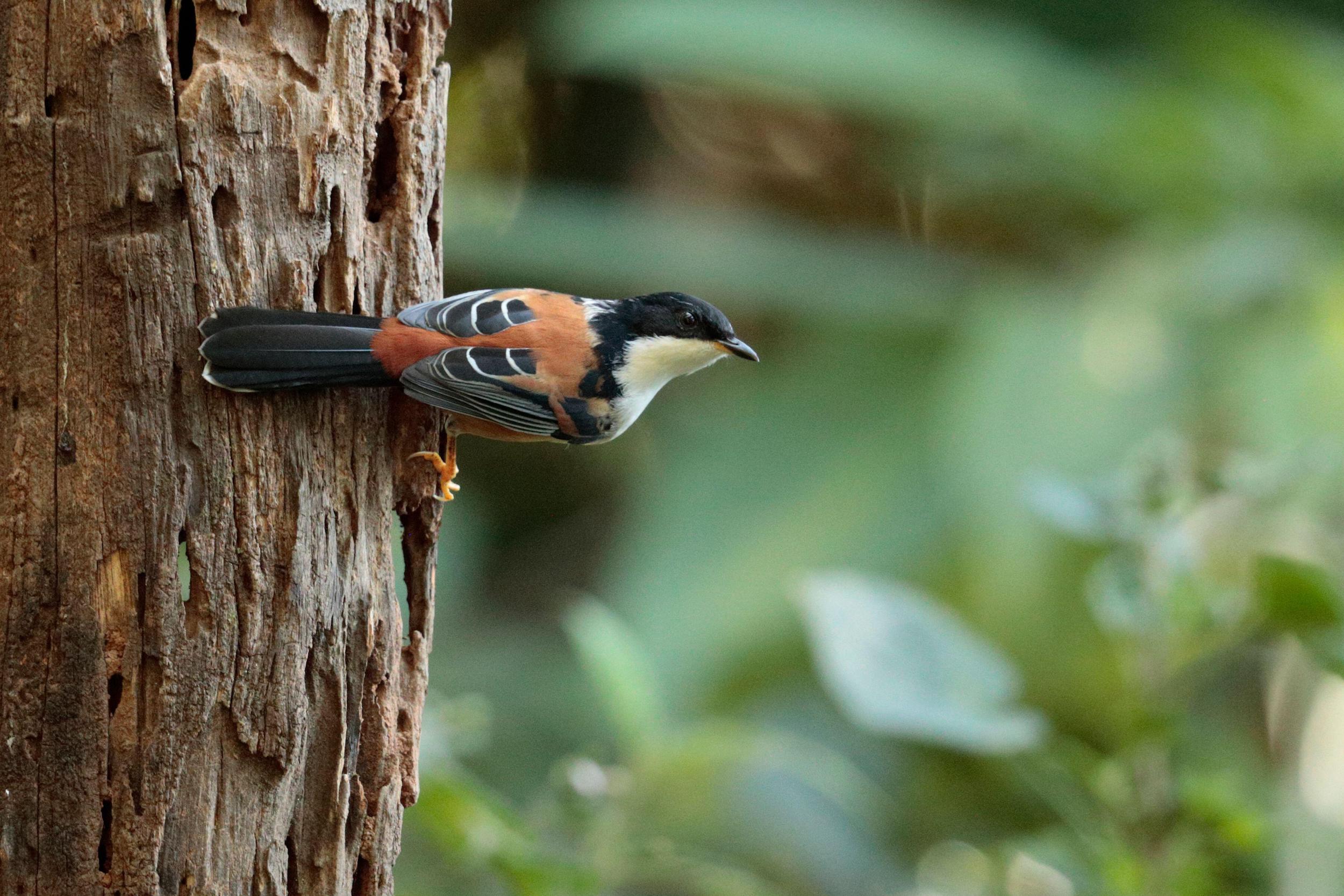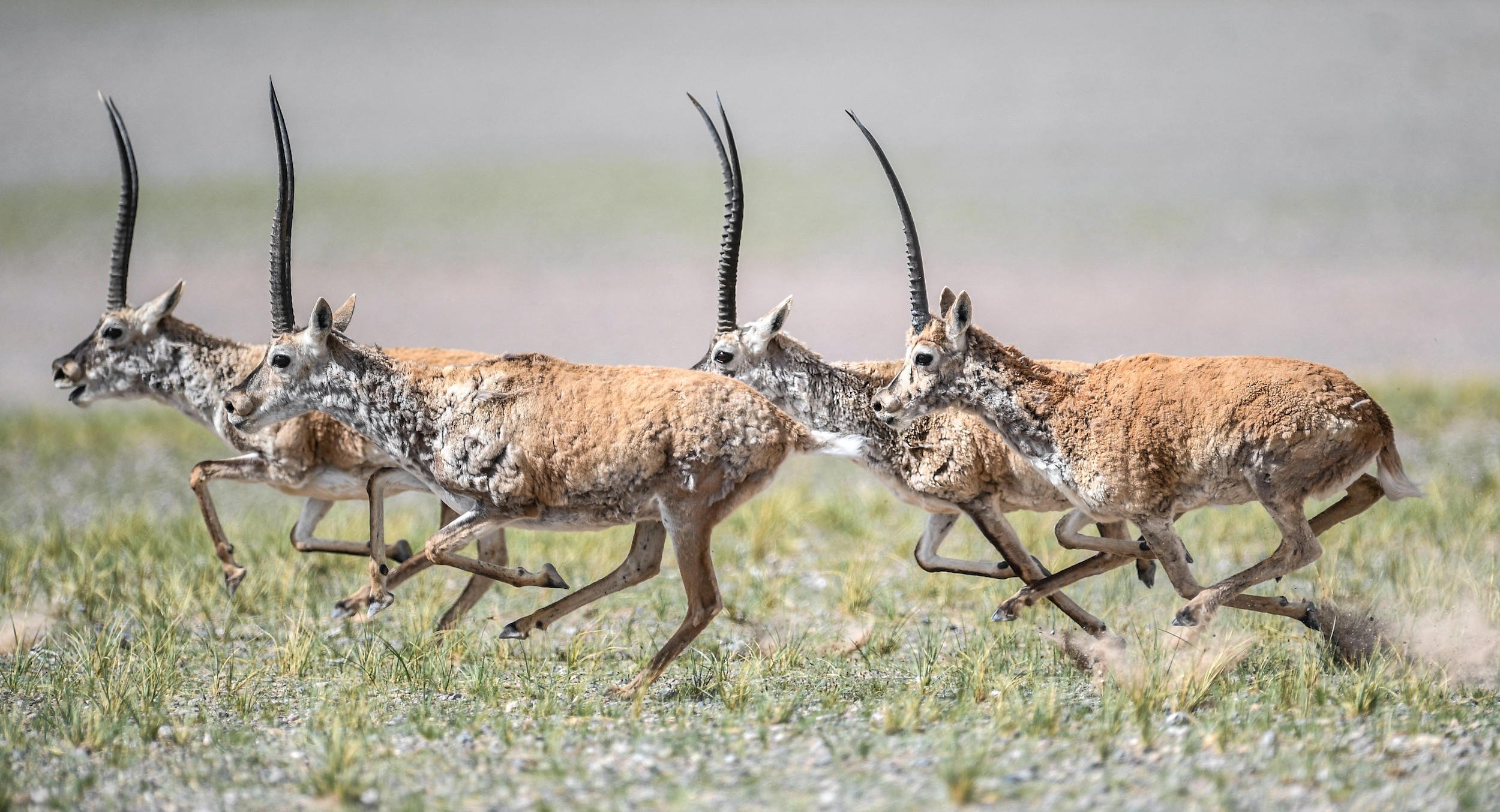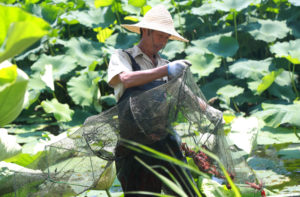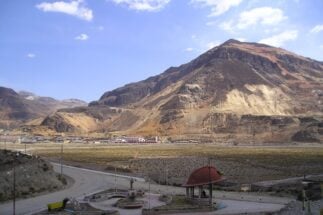The coronavirus showed the disastrous consequences that can arise when the relationship between humanity and the rest of nature falls out of balance. Yet the pandemic has also slowed progress on a global framework designed to correct that relationship.
The 15th Conference of the Parties to the Convention on Biological Diversity (CBD COP15) has been pushed back to May 2021, leaving eight months to decide on a global biodiversity framework for after 2020 – a roadmap for the coming decade, setting targets for the protection of biodiversity over those 10 years and perhaps longer.
The latest draft of the proposal – known as the 0.5 draft – has caused disappointment. Susan Lieberman, vice president for international policy with the Wildlife Conservation Society, told China Dialogue that “all the governments said they wanted something ambitious, but then when they started to negotiate, there’s no ambitions there.” She pointed out that the proposal “doesn’t really talk about [protected] areas being effectively managed, just making a line on the map. It ignores Covid and the whole issue of wildlife markets and trade.”
Basile van Havre is co-chair of the Open-ended Working Group on the Post-2020 Global Biodiversity Framework (“open-ended” means all UN member states are invited to participate). He told China Dialogue that it is easy for people to forget the biodiversity crisis during a pandemic.
The lack of progress means hopes are being placed in COP15’s host – China. This is the first time China has hosted a multilateral environmental conference of this level. Guido Schmidt-Traub, executive director of the UN Sustainable Development Solutions Network, told China Dialogue that China is bound to play a central role in the talks, but that its status as host also brings risks. Like all rapidly developing nations, China faces huge challenges in protecting biodiversity. But, he said, “the fact that, in spite of these risks, China has also agreed to host CBD COP is very significant. I think it does underscore China’s commitment to what is called ecological civilisation.”
Back in 2015, France used its status as host to help conclude the landmark Paris Agreement on climate. In 2021, can China inject political momentum into the global biodiversity process?
Goals: Ambition and realism
A CBD conference has been held every two years since the convention came into being in 1992. There has been no shortage of political commitments, funding initiatives and work but global biodiversity has still seen massive losses. Van Havre stressed the importance of the Kunming meeting providing a “major course correction in our effort to reach the vision”. But he also warned that the pandemic is making diplomacy more difficult, as meetings are cancelled or delayed and national representatives miss out on face-to-face interactions.
The remaining eight months will see only one meeting of the Open-ended Working Group on the draft proposal, and two technical meetings, but the pandemic may yet prevent these going ahead. And many disagreements remain over expectations for the Kunming conference.
The core of the talks is balancing the three major goals of the CBD: protection of global biodiversity, sustainable use of biodiversity, and sharing of the benefits. The Global Ocean Alliance, founded by nations including the UK, Costa Rica and Finland, supports the “30×30” goal – to protect 30% of ocean areas by 2030. Others reserve judgement. Currently, only 7.45% of the ocean is protected.
The science is clear, we need at least 30% of the ocean [protected]. I would never say ‘we know everything’. But we do know enough to take action.Susan Lieberman, vice president for international policy with the Wildlife Conservation Society
The 30×30 target is the “star” of the agenda, but consensus is hard to reach in other areas too. For example, developed and developing nations disagree on whether derivatives of genetic resources (such as genetic sequencing data) should be shared. Li Shuo, senior global policy advisor with Greenpeace East Asia, thinks this is not something COP15 can solve, and that a procedural decision to hold further discussions in the future will likely be taken.
Other countries think China’s role as host grants it huge potential to influence the talks and encourage the setting of tough “Kunming targets”. In November 2019, China and France jointly issued the Beijing Call for Biodiversity Conservation and Climate Change, calling for the world to “define and adopt an ambitious and realistic post-2020 global biodiversity framework building on the Aichi Biodiversity Targets and the lessons learned from the implementation of the Strategic Plan for Biodiversity 2011-2020.”
But China has reservations on some key issues, including the 30×30 target, due to concerns about “realism”. Liu Ning, an official with the Ministry of Ecology and Environment’s Ecological Protection Department and a lead negotiator in the Chinese delegation to COP15, said in an online meeting in July that while China is actively participating in global talks on ocean protection, more scientific evidence is needed before a goal is set, as current findings are inadequate.
“I think the science is clear, that we need at least 30% of the ocean [protected],” said Susan Lieberman. “I would never say ‘no, the science is just done, we know everything’. But we do know enough to take action.”
Of the global ocean, 61% falls outside national jurisdictions, and so any ambitious plan touches upon management of these high seas – a thorny problem. How China, as host, influences the 30×30 target, will be closely watched. “If there’s one thing we need decided in Kunming, even if it’s in the final 24 hours, it’s the 30×30 target,” said Li Shuo.
Funding and implementation
Consensus on funding and implementation is also proving hard to find. Developing countries say they need more money – at an Open-Ended Working Group meeting in Rome this March, Brazil asked for funding in compensation for protecting the Amazon. African nations want to see a global diversity fund to supplement existing funding mechanisms.
Funding has long been a chronic issue for global environmental governance, and the pandemic will make mobilising money even harder. Susan Lieberman hopes people realise environmental destruction, as well as protection, is getting funding. One example, she said, is fishing subsidies: “If that money stopped destroying the environment, there would be plenty for conservation.” Guido Schmidt-Traub has been calling for the biodiversity and climate issues to be solved in tandem, as funds mobilised for climate change could also help protect biodiversity.

It is common practice for a COP host to initiate a new fund to help achieve the targets set at the meeting. At COP9, Germany provided 800 million euros in support of over 30 sub-projects. At COP10, when talks over the Nagoya Protocol had stalled, host Japan stepped in at the last minute with a commitment to create a 1 billion yen Japan Biodiversity Fund, with an additional 1 billion yen for capacity building in developing nations. Experts say China is working on a host fund and has already sounded out views.
But the CBD’s weakest point is implementation. Guido Schmidt-Traub told China Dialogue this is because the factors driving biodiversity loss – agriculture, industry, urban development and climate change – do not fall under the jurisdiction of the environmental authorities and require cross-departmental approaches. This means complex and less efficient governance mechanisms.
Also, the convention has 20 global goals, unlike the easily understandable 2C temperature rise target of the Paris Agreement. And within those global targets, there is no requirement for national targets to be set, as there is in the climate change process. This means national reports on actions taken cannot be compared.
“That’s why I’ve always said each nation must set its own national targets once a global target is set in Kunming. That’s the only way to ensure the actions of individual nations can be compared with each other.”
But Guido Schmidt-Traub says there simply isn’t enough time for this to happen at Kunming. He doesn’t want to see very specific talks on implementation, as this would touch upon national sovereignty and there is a lack of the necessary knowledge: “We don’t really know how to solve the biodiversity crisis. There’s a lot of innovation that’s needed.” He says the Kunming talks should come up with ambitious and clear targets – but implementation is outside the scope of the current framework.
Leadership: A test for the host
Hosting a successful conference presents a host nation with three challenges: of political will, diplomacy and logistics. Nobody doubts China’s logistical capacity. “This is not a small task and failing would have important consequences. Making the proper arrangements is very useful in facilitating discussion,” said Basile van Havre, adding: “There is no doubt in my mind that China will deliver a good logistics package for the meeting.”
The theme for COP15, “Ecological civilization building: a shared future for all life on Earth”, reflects a strong political will for international environmental governance rooted in domestic politics. The concept of the ecological civilisation was put forward at the 17th National Congress of the Communist Party of China in 2007, and then elevated to the status of a national strategy. With 2020 being the final year of China’s 13th Five Year Plan, a domestic system showcasing the concept has been established. And so COP15 is important for China on both the domestic and international levels.
But the key to displaying leadership at COP15 will be how to bring the 196 signatories to the convention to a consensus.
One senior observer following the talks told China Dialogue that “China has a very strong theme, but what is it that China wants these 196 countries to agree on? We haven’t seen an answer to that.” The EU, in contrast, has recently published a 2030 Biodiversity Strategy, making its aims clear.
China has always taken a low-key approach to the CBD and environmental diplomacy, rarely putting forward original ideas. But in Kunming such an approach could look like a failure to fulfil its role as host and chair, or reflect a lack of ambition.
The world hopes China will be clearer about its position. Zhu Zhengguang, senior researcher with the National Marine Environmental Monitoring Centre at the Ministry of Ecology and Environment, told China Dialogue: “China does not declare a stance lightly, so you need to look at clues to try and discern changes – people try to sound out China in different settings all the time.”
One expert coordinating China’s informal exchanges with other signatories said that, alongside its own reservations, China is also aware it has to take the stances of other signatories into account – particularly the concerns of developing nations over funding and obligations.
Over a quarter
of China’s land area is covered by its ‘ecological redlines’ policy, meaning the land has been put under protection or sustainable management.
China’s caution also stems from its mechanisms and capacity for engaging with international treaties. It has set up an institutional framework to prepare for the COP15 meeting, with over 20 government bodies involved, but coordinating its stance and communicating it to the world is full of challenges. Those involved in the preparations, or close to the process, generally agree certain capacities and scientific support are needed for a host nation to display leadership. And while the government bodies involved have dedicated staff to the process, more needs to be done if they are to work together. Zhu Zhengguang, who once represented China during negotiations on the Convention on International Trade in Endangered Species, told China Dialogue that “we need to mobilise more personnel and organisations to strengthen the team and better fulfil China’s role in global environmental governance.” Susan Lieberman thinks NGOs could fill this gap.
Basile van Havre suggests a “diplomatic push” like that mounted by France prior to the Paris climate talks, which would need to be done at a high, at least ministerial, level. He thinks that as host China has the advantage of being able to start to informally influence others: “China may want to consider engaging directly with key leader countries to create political ambition and a community that is at ease working together. Opportunities exist with the upcoming UNGA Biodiversity Summit and the IUCN World Conservation Congress.”
“I think China is in a unique place to reach across to a number of countries,” he said, adding that it has a significant advantage in being able to persuade as yet undecided developing nations.
Making China’s mark
As well as through diplomacy, experts say that China can contribute to the talks by innovating.
Guido Schmidt-Traub says China’s innovative land-use planning frameworks could help solve the implementation problem. In July, he worked on a paper with a Ministry of Ecology and Environment research body, the Chinese Academy of Sciences, and researchers from Canada, Colombia and other countries. It found those frameworks and their “ecological redlines” could be valuable elsewhere. China can, Schmidt-Traub said, provide a model for cross-departmental integration in biodiversity protection.
He thinks China’s land-use planning framework allows for climate, biodiversity and desertification targets to be met in an integrated fashion. The logic is that all three problems are caused by how humanity uses the planet, and land management can create biodiversity and carbon synergies – or trade-offs. Only overall planning can produce the best environmental outcomes.
Currently China’s ecological redlines cover one quarter of its land area – and by law can only be expanded. China has also set other “redlines” – certain areas of agricultural land have been deemed inviolable, and boundaries drawn to limit urban expansion. These systems will provide the basis for sustainable development.
China’s land-use planning framework, as part of the 14th Five Year Plan (2021-2025), will be deployed to provide strategic zoning guidance to land use for ecological conservation, urbanisation, industry and infrastructure. The framework is managed solely by the Ministry of Natural Resources, making it a practical tool for managing biodiversity and reducing the costs and inefficiencies of working across departments.
“China actually is the only country doing this, as far as I’m aware,” said Guido Schmidt-Traub. He suggests China announces that the land-use planning framework and redline system will form part of its Long-term Low Emissions Development Strategy and submits these documents to both the CBD and the UN desertification convention, for other countries to study and emulate. He also hopes that China will encourage “Belt and Road Initiative (BRI) partner and key commodity supply countries to apply similar land-use planning frameworks under the Rio conventions,” which “could make major contributions towards greening the BRI.”
Despite China’s reservations about the 30×30 target for the ocean, it has been putting increasing resources into ocean protection in recent years. In 2016, the State Oceanic Administration said provinces should use redlines to protect at least 30% of the ocean area under their jurisdiction. Lately, China has expanded its ocean policy to cover the high seas, with three month closed seasons imposed on squid fishing in parts of the Pacific and Atlantic, to protect stocks.
This shows China is using “other effective area-based conservation measures” (OECMs) to help protect the oceans, said Zhu Zhengguang. Marine Protected Areas are a key tool, but OECMs can also help conservation, so national governments and international organisations are investigating their use. “China is working to make a contribution here,” he said.
A geographically defined area other than a Protected Area, which is governed and managed in ways that achieve positive and sustained long-term outcomes for the in situ conservation of biodiversity, with associated ecosystem functions and services and where applicable, cultural, spiritual, socio-economic, and other locally relevant values (CBD, 2018).
With eight months to go before the Kunming meeting, and the Covid-19 pandemic still a global health emergency, making progress on biodiversity will need firm and ambitious leadership. “If I can do just one thing, I will get China to speak out about what needs to happen in Kunming,” said Susan Lieberman, “because the world will listen to what China has to say.”








